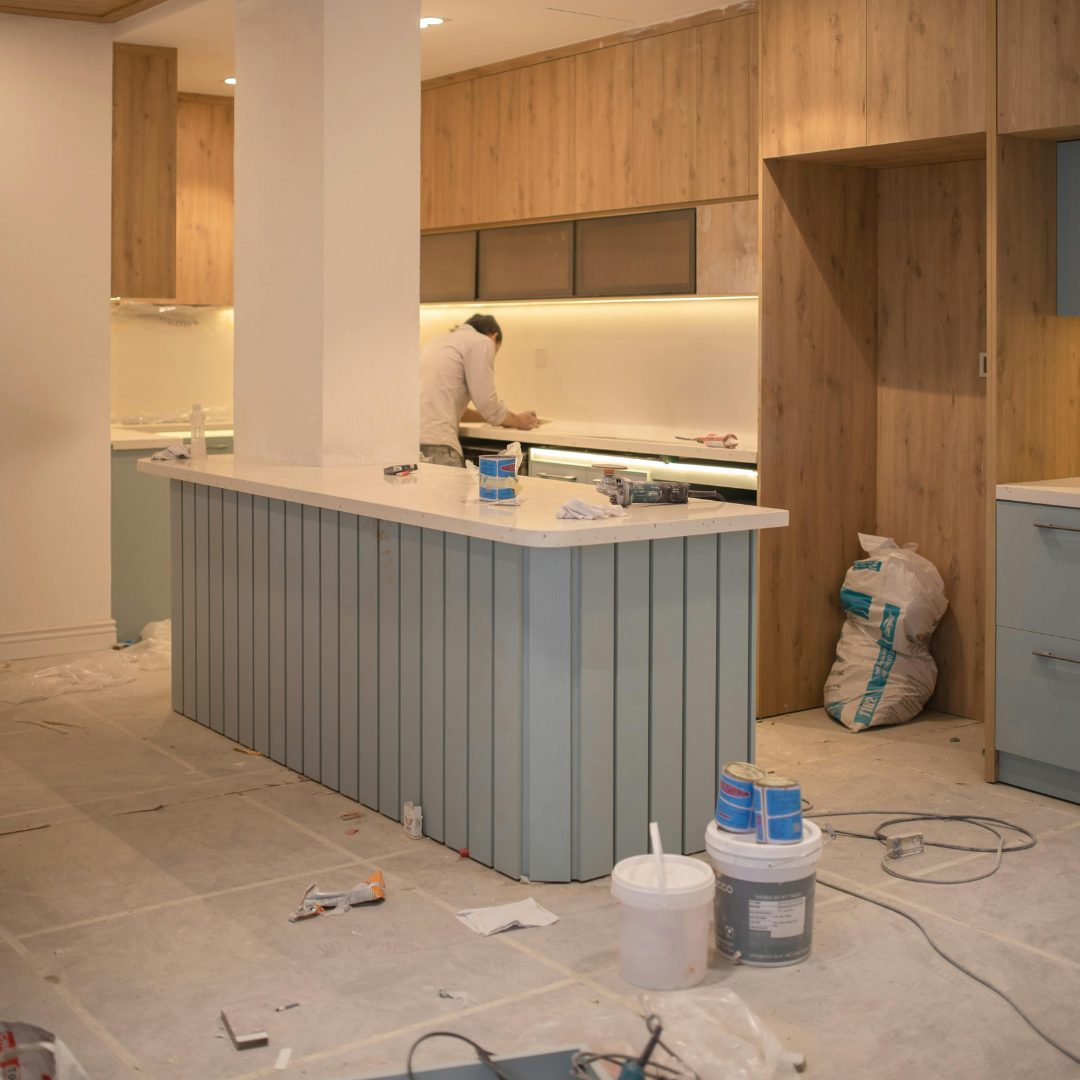Budgeting for a kitchen remodel can seem daunting, but it doesn’t have to break the bank. To create a stunning kitchen without overspending, focus on strategic upgrades and smart planning. With the right approach, anyone can achieve a modern and functional space that enhances both style and efficiency.
Start by assessing the current layout and identifying areas that require the most attention. Simple changes like updating fixtures, painting cabinets, or enhancing lighting can make a significant difference at a lower cost. Additionally, exploring options like open shelving or DIY projects can further stretch the budget while adding personal flair.
Researching materials and seeking out sales or second-hand items can yield great savings. It’s essential to prioritize the most impactful changes that align with the overall vision for the kitchen. With careful planning and resourcefulness, a budget-friendly kitchen remodel is entirely achievable.
Establishing Your Kitchen Remodel Budget
Creating a budget for a kitchen remodel is essential for a successful project. Knowing where to allocate funds and preparing for any potential surprises can streamline the remodeling process.
Identifying Major Costs
The first step is to determine the significant expenses associated with the remodel. Key elements typically include:
- Cabinetry: Depending on material and design, cabinets can consume a large portion of the budget.
- Countertops: Choices vary widely, from laminate to natural stone, influencing the overall cost.
- Appliances: Upgrading to energy-efficient models can save money long-term, but requires a substantial immediate investment.
Additionally, labor costs should not be overlooked. Hiring professionals for installation or design services can greatly impact the budget. It’s wise to get quotes from several contractors to compare prices.
Allocating Funds for Priorities
After identifying major costs, the next step is to prioritize. Determine which aspects of the remodel are most important. For example:
- If countertop upgrades are a priority, allocate more funds here and possibly reduce spending on decor items.
- If energy efficiency is a focus, invest in high-quality, ENERGY STAR appliances.
Utilizing a table can help visualize allocations:
| Item | Estimated Cost | Priority Level |
| Cabinets | $5,000 | High |
| Countertops | $3,000 | Medium |
| Appliances | $4,000 | High |
| Flooring | $2,000 | Medium |
This chart can guide decisions as the remodel progresses. Adjusting the budget according to priority areas allows for a tailored approach.
Planning for Unexpected Expenses
No remodel is complete without considering potential unforeseen costs. A good rule of thumb is to set aside 10-15% of the overall budget for surprises. Common unexpected expenses can include:
- Structural repairs: Discovering issues with plumbing or electrical systems may require immediate attention.
- Change orders: Modifying designs mid-project often incurs extra fees.
Creating a contingency plan early on can help alleviate financial strain. By anticipating additional costs, it becomes easier to keep the remodel on track without overspending.
Smart Design Choices to Maximize Savings
Making informed design choices can significantly reduce costs while enhancing the kitchen’s functionality and aesthetics. This section outlines essential strategies, such as optimizing layout and considering alternative storage options.
Efficient Kitchen Layout Planning
A well-planned kitchen layout can maximize efficiency and minimize costs. The triangle layout, which connects the refrigerator, stove, and sink, optimizes workflow and increases usability.
Considering the kitchen’s footprint allows for adjustments without costly structural changes. Employing design software or simple sketches can help visualize space effectively.
Also, factor in natural light when mapping out the layout, especially in kitchens with limited wall space. Strategically placed rooflights can brighten work areas, reduce reliance on electric lighting, and make smaller footprints feel larger.
Before finalising fixtures or cabinet finishes, it’s worth reviewing common pitfalls that affect functionality and budget. Simple oversights, like underestimating storage needs or picking materials unsuited to heavy use, can undo careful design work; consulting a concise guide to home renovation mistakes can help spot those traps early.
That checklist can prompt useful questions for your designer or contractor, such as whether a layout change will create awkward workflows or hidden costs. Taking a few moments to cross-check choices against proven mistakes often saves time and expense later.
For projects that need bespoke, energy-efficient and code-compliant solutions, companies such as Sunsquare can provide rooflights tailored to American building standards. Discussing daylighting options with the designer early will help inform placement, glazing and ventilation choices that balance light, glare and heat gain.
Finally, concentrate on the workspace movement. Reducing unnecessary steps can lead to a more livable and enjoyable space.
Deciding Between Refacing and Replacement
Cabinetry can represent a significant portion of remodeling costs. Homeowners often face the decision of refacing existing cabinets or replacing them entirely. Refacing generally offers a cost-effective solution.
Refacing involves replacing doors and hardware while preserving the cabinet boxes. It provides a fresh look without the expense of new cabinetry.
Replacement may be necessary for damaged cabinets or if a new layout is desired. Assessing current conditions helps in making the most economical choice.
Moreover, when precise fit and tailored functionality are important, customized cabinetry can be especially beneficial. By adjusting dimensions, finishes, and storage options to the specific space, homeowners can maximize both usability and aesthetic appeal.
To facilitate this, reputable firms like Lovech offer personalized solutions that help transform kitchens to meet unique needs. Ultimately, thoughtful planning and the right approach ensure a kitchen that is both functional and visually appealing for years to come.
Incorporating Open Shelving and Floating Shelves
Open shelving is a practical option that enhances visual appeal and reduces costs. It eliminates the need for closed cabinetry, which can be pricier.
Floating shelves offer versatility and a modern touch. They provide an open feel, making kitchens appear larger.
By showcasing dishes and decorative items, open shelving enhances livability.
Careful organization can mitigate clutter, ensuring that these shelves serve both form and function effectively.
Affordable Kitchen Features and Materials
Budget-friendly kitchen remodels can focus on selecting cost-effective materials without sacrificing style. Two critical areas to consider are cabinets and countertops, both of which offer plenty of affordable options.
Selecting Cost-Effective Cabinet Options
When choosing cabinets, consider ready-to-assemble (RTA) options. These are often less expensive and can save on labor costs since homeowners can assemble them. They come in various styles, allowing flexibility in design.
Melamine or laminate cabinets provide a durable, attractive option that fits tight budgets. They resist scratches and stains better than many wood options. Those looking for a more personalized touch can reface or paint existing cabinets, which offers a fresh look without the expense of a complete replacement.
Key Points:
- RTA cabinets save on labor.
- Melamine and laminate are durable.
- Refacing is a cost-effective alternative.
Choosing Budget Kitchen Countertops
Budget kitchen countertops can be functional and stylish. One popular choice is laminate, which mimics the appearance of more expensive materials. It is available in various designs, making it easy to match with cabinetry.
Another option is solid surface countertops, which offer a more seamless look than laminate. While not as economical as laminate, they remain less expensive than natural stone options like granite.
Granite countertops can also fit into a budget if homeowners seek remnant pieces. These leftover segments can provide unique patterns at a fraction of the full price.
Key Points:
- Laminate offers varied designs.
- Solid surfaces provide seamless aesthetics.
- Remnant granite can be a budget-friendly choice.
Finally, for those seeking a more personalized approach, custom countertops offer the opportunity to create surfaces that perfectly suit the kitchen layout, style, and budget. This ensures a distinctive, durable finish that enhances both functionality and the overall aesthetic of the space.
DIY Solutions and Professional Help
Kitchen remodels can incorporate both DIY projects and professional services to manage costs effectively. Balancing these options is crucial for a successful renovation.
Tackling DIY Projects Safely
Before starting any DIY projects, it is important to assess skills honestly. Simple tasks like installing new cabinet hardware or updating the kitchen backsplash can be tackled with basic tools and knowledge.
Make sure to gather the necessary materials and safety equipment. Wearing goggles and gloves is essential when using power tools or sharp objects.
When attempting more involved tasks, such as building a kitchen island, detailed plans and precise measurements are critical. Following step-by-step tutorials can enhance safety and outcome quality.
When to Hire Design Services or Specialists
Certain situations warrant professional input. For intricate designs or complex systems, it is wise to consult a designer. They can provide valuable insights into space optimization and aesthetics.
Specialists may be necessary for plumbing or electrical work, particularly if it involves extensive modifications. Errors in these areas can lead to costly repairs, which may negate savings from a DIY attempt.
Budgeting for these services can ultimately streamline the remodel process and enhance the final result. A well-designed space increases functionality and may add long-term value to the home.
Affordable Updates: Backsplashes, Lighting, and Hardware
Simple updates can dramatically refresh a kitchen’s look. Installing a new backsplash is generally a manageable DIY task. Options like peel-and-stick tiles offer affordability and ease of installation.
Updating lighting fixtures can enhance task lighting dramatically. Consider energy-efficient LED options that provide better illumination and save on utility bills.
Swapping out cabinet hardware is another cost-effective way to refresh the space. Opt for stylish knobs or handles that match the desired kitchen theme. These small updates can significantly improve the overall aesthetic without a major investment.

